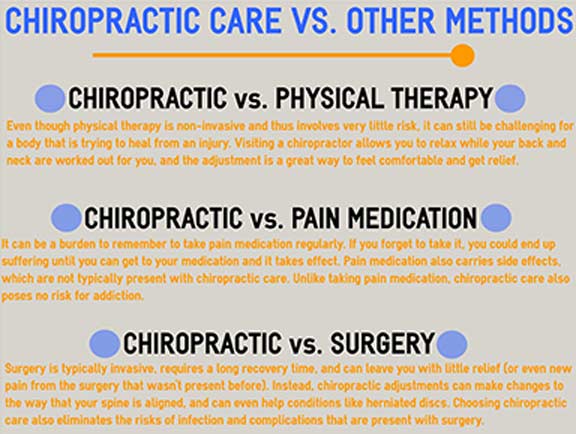Uncovering The Scientific Research Behind Cold Laser Therapy: Analyzing Its Systems And Implications
Uncovering The Scientific Research Behind Cold Laser Therapy: Analyzing Its Systems And Implications
Blog Article
Content By-Rosendahl Daley
You may have become aware of cold laser therapy as a promising treatment alternative for various conditions, but have you ever questioned just how it in fact works with a cellular degree? Understanding the devices behind this treatment can shed light on its performance in advertising healing and reducing swelling. By exploring the science behind cold laser therapy, you'll acquire insights into the interesting ways in which light can influence cellular processes and assist in cells repair service.
Exactly How Cold Laser Treatment Functions
To recognize just how cold laser treatment functions, you require to understand the fundamental concepts of exactly how light power engages with biological cells. Cold laser treatment, additionally known as low-level laser treatment (LLLT), uses particular wavelengths of light to penetrate the skin and target hidden tissues. Unlike the extreme lasers utilized in operations, cold lasers emit reduced levels of light that don't generate warmth or trigger damage to the tissues.
When these mild light waves reach the cells, they're taken in by elements called chromophores, such as cytochrome c oxidase in mitochondria. This absorption causes a series of organic actions, including boosted mobile energy production and the launch of nitric oxide, which improves blood circulation and minimizes swelling.
Additionally, laser therapy for smoking cessation near me can likewise boost the manufacturing of adenosine triphosphate (ATP), the energy currency of cells, aiding in cellular fixing and regrowth procedures.
Basically, cold laser therapy uses the power of light energy to advertise recovery and relieve discomfort in a non-invasive and mild way.
Systems of Action
How does cold laser therapy actually work to produce its healing results on biological cells?
Cold laser treatment, also called low-level laser therapy (LLLT), operates via a procedure known as photobiomodulation. When the cold laser is related to the skin, the light energy penetrates the cells and is absorbed by chromophores within the cells.
These chromophores, such as cytochrome c oxidase in the mitochondria, are after that boosted by the light energy, bring about a cascade of organic responses. One vital device of activity is the enhancement of cellular metabolic process.
The soaked up light energy boosts ATP manufacturing in the mitochondria, which is essential for mobile function and repair. In addition, cold laser treatment aids to decrease swelling by inhibiting inflammatory mediators and advertising the release of anti-inflammatory cytokines.
This anti-inflammatory impact contributes to pain relief and tissue recovery.
Therapeutic Effects
Recognizing the healing results of cold laser treatment entails acknowledging how the enhanced cellular metabolism and anti-inflammatory residential properties contribute to its positive end results on biological cells.
When https://www.healthline.com/health/chronic-dry-eye/intense-pulsed-light-therapy-for-chronic-dry-eye is put on the afflicted area, it boosts the mitochondria within the cells, bring about boosted manufacturing of adenosine triphosphate (ATP), which is essential for cellular function and fixing. https://chiropractic-and-wellness95139.mdkblog.com/33508946/changing-pain-administration-and-recovery-with-cold-laser-therapy in cellular energy speeds up the recovery process by advertising tissue regeneration and lowering swelling.
Moreover, the anti-inflammatory residential or commercial properties of cold laser therapy help to decrease discomfort and swelling in the targeted location. By inhibiting inflammatory conciliators and promoting the launch of anti-inflammatory cytokines, cold laser therapy aids in easing pain and improving the general healing action.
This reduction in swelling not just offers instant relief however likewise sustains long-term cells fixing.
Conclusion
In conclusion, cold laser treatment functions by stimulating mobile fixing and cells regeneration via photobiomodulation. Its anti-inflammatory residential properties give discomfort alleviation and lower swelling by hindering inflammatory mediators.
This treatment provides an extensive method to recovery, providing both prompt relief and lasting tissue repair advantages.
With its systems of action, cold laser treatment proves to be an efficient and appealing therapy alternative for a variety of problems.
